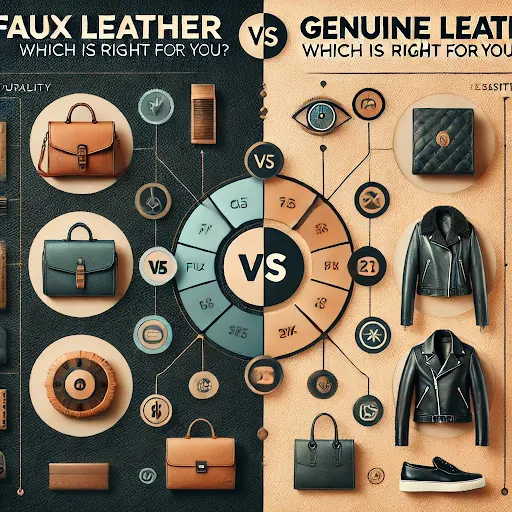The choice between faux leather and genuine real leather depends on various factors, including personal preferences, ethical considerations, and intended use. Here's a comparison between the two:
Faux Leather:
Material: Faux leather is typically made from synthetic materials such as polyurethane (PU) or polyvinyl chloride (PVC), and sometimes blended with fabric.
Cost: Faux leather is generally more affordable than genuine leather, making it an attractive option for budget-conscious consumers.
Sustainability: Faux leather can be considered more environmentally friendly, especially if it is made from eco-conscious materials. However, the production of synthetic materials also has its environmental impact.
Versatility: Faux leather allows for a wide range of designs, colors, and patterns, providing designers with greater flexibility in creating innovative and trendy products.
Ethical Considerations: Faux leather is a cruelty-free option, suitable for those who are concerned about animal welfare.
Durability: While faux leather can be durable, it may not withstand wear and tear as well as genuine leather over an extended period. It may be more prone to cracking and peeling.
Genuine Real Leather:
Material: Genuine leather comes from animal hides, typically cowhide but also from other animals like goats and pigs.
Cost: Genuine leather is generally more expensive due to the cost of sourcing and processing natural hides.
Sustainability: Leather production can have environmental impacts, particularly in the traditional tanning process. However, there are efforts to improve sustainability in the leather industry, such as using vegetable tanning methods.
Natural Characteristics: Genuine leather has unique natural variations in texture, color, and grain, adding character to each piece. It develops a rich patina over time.
Durability: Genuine leather is known for its durability and longevity. It tends to age well, becoming softer and more supple with time.
Breathability: Natural leather is breathable, allowing air circulation, which can be more comfortable in certain applications like clothing and upholstery.
Ultimately, the choice between faux leather and genuine real leather depends on individual preferences, budget, ethical considerations, and the intended use of the product. Both materials have their advantages and disadvantages, and the decision often comes down to personal values and the specific requirements of the consumer.

